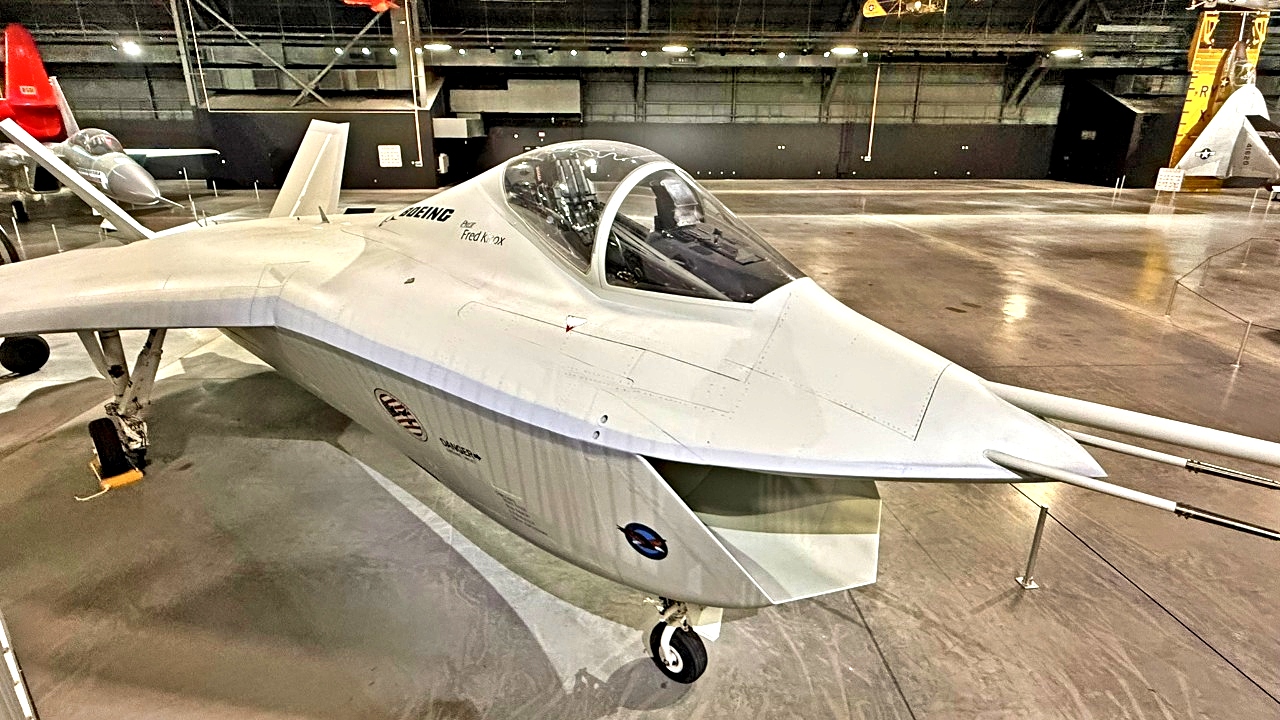Key Points and Summary on the X-32: The Boeing X-32, a prototype stealth fighter, represents one of the most significant “what ifs” in modern military aviation.
-Developed for the Joint Strike Fighter (JSF) competition, it ultimately lost to Lockheed Martin’s X-35, which became the F-35.
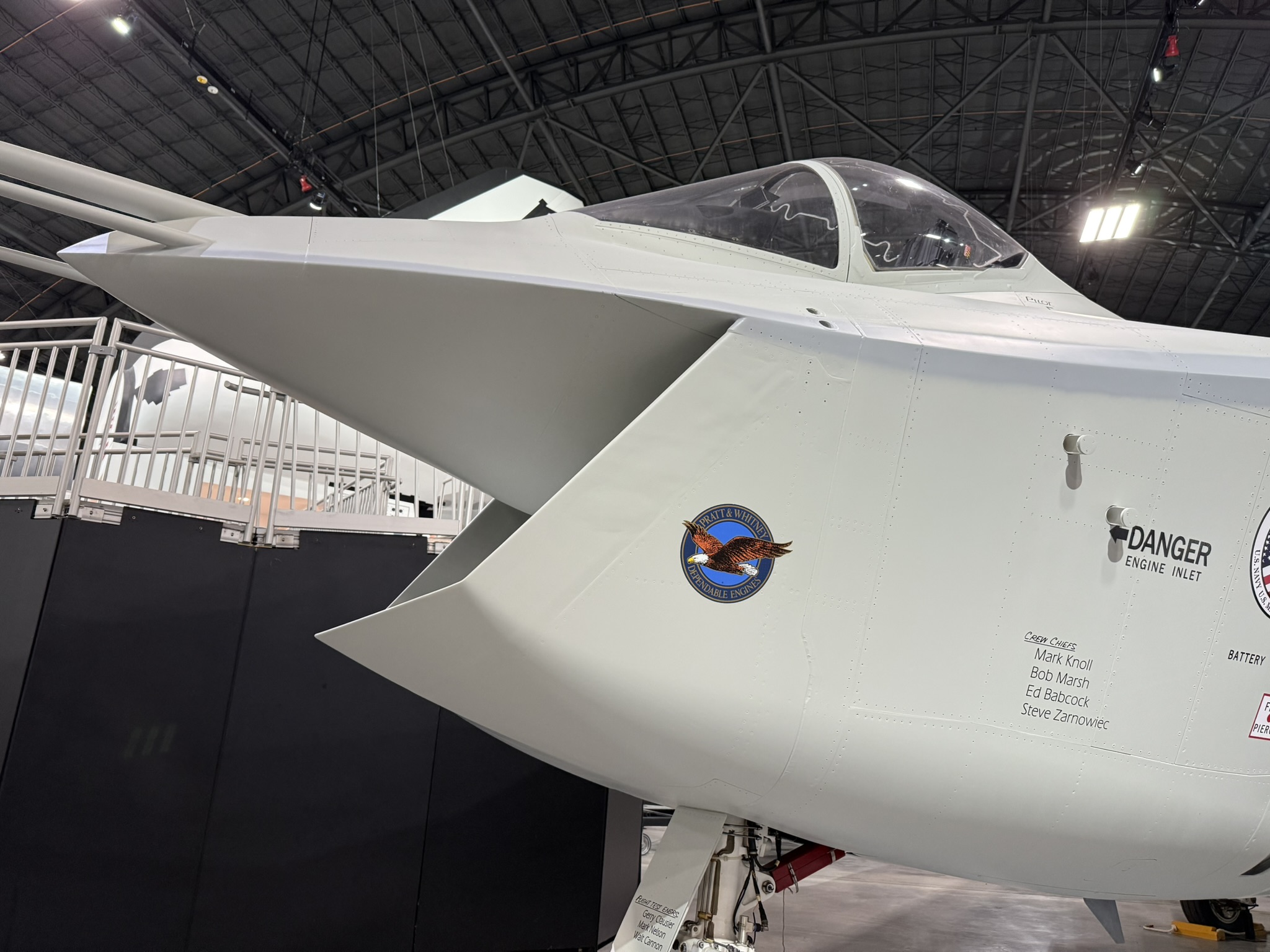
Boeing X-32 National Security Journal Photo. Taken on 7/19/2025.
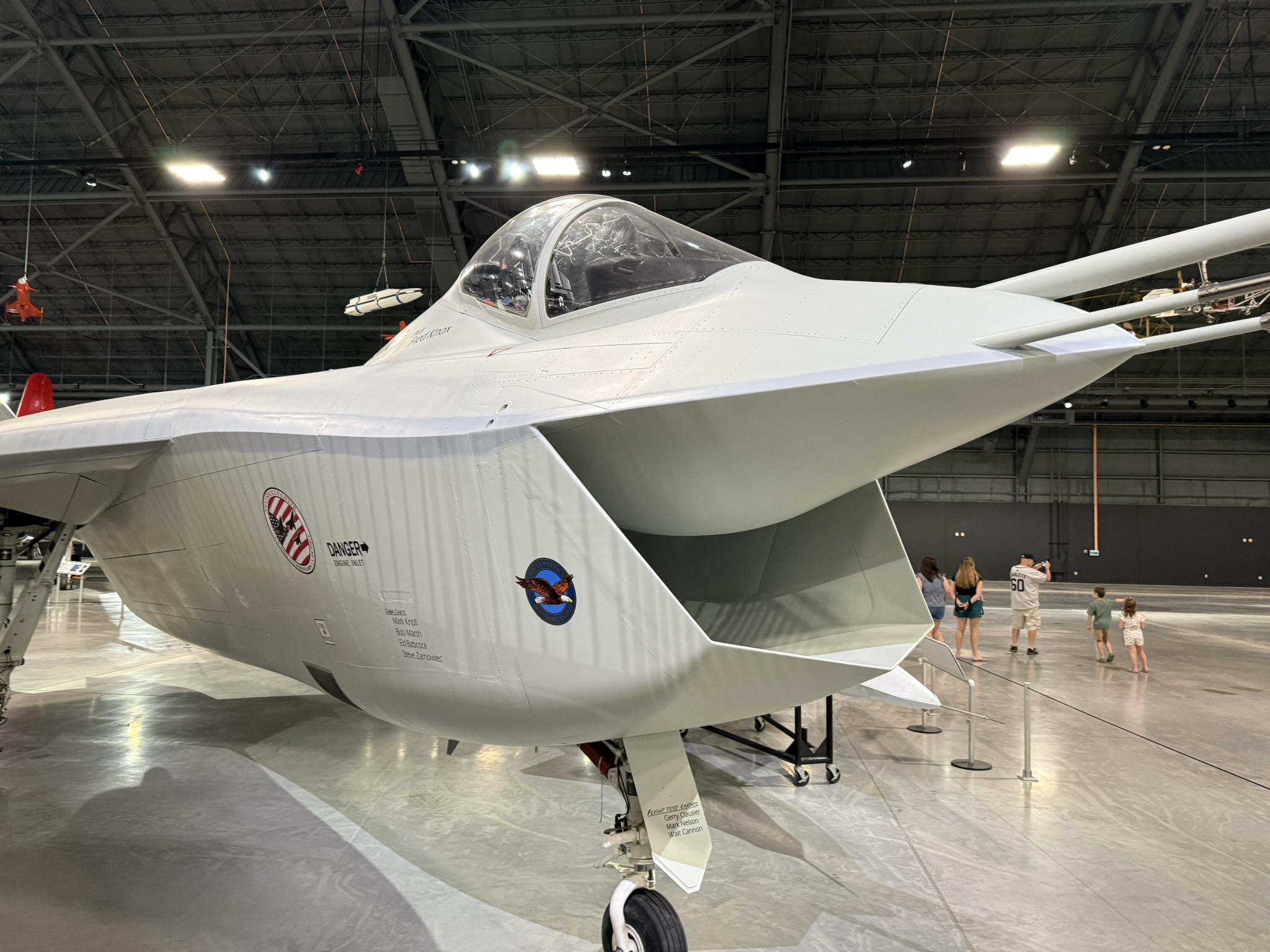
Boeing X-32 National Security Journal Photo. Taken on 7/19/2025.
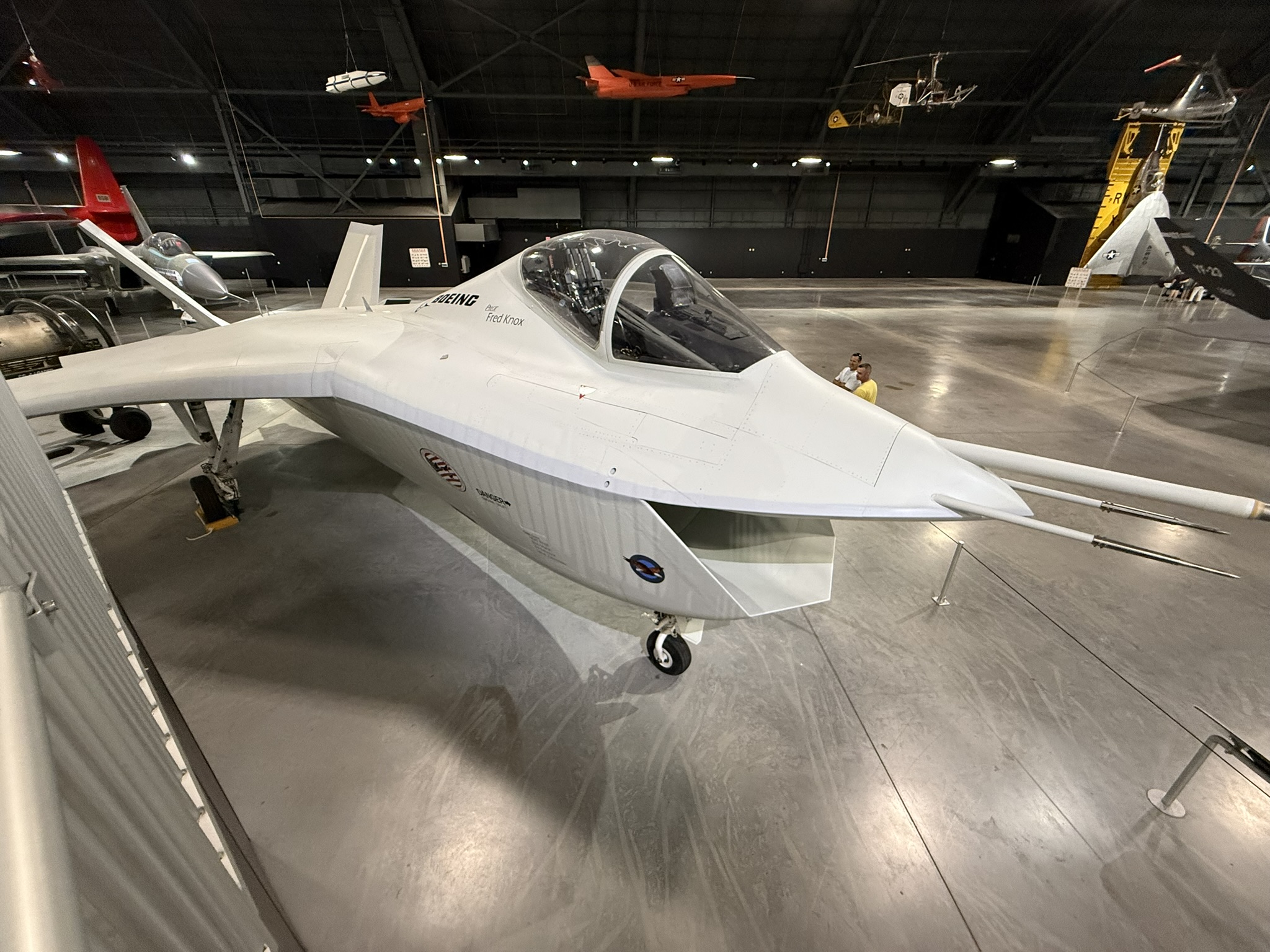
Boeing X-32 National Security Journal Photo. Taken on 7/19/2025.
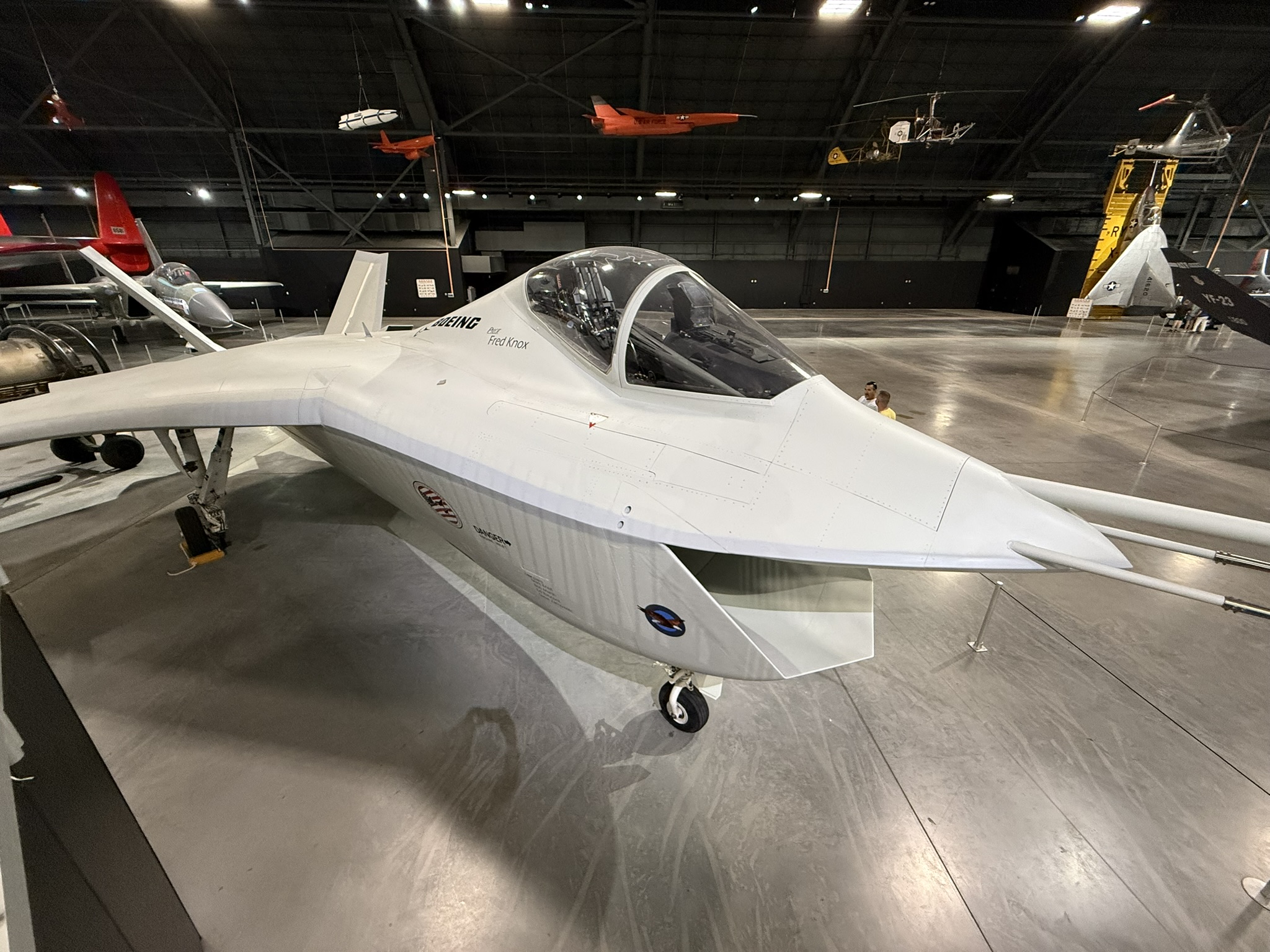
Boeing X-32 National Security Journal Photo. Taken on 7/19/2025.
-The X-32’s downfall was its complex and less effective vertical/short takeoff-and-landing (V/STOL) design, which suffered from engine exhaust recirculation and overheating issues.
-A crucial flight demonstration, where the X-35 successfully performed a vertical takeoff, supersonic dash, and vertical landing in a single flight, sealed the X-32’s fate, relegating Boeing’s innovative but flawed jet to a museum piece.
Boeing X-32 Stealth Fighter Explained
When the United States Air Force awarded Boeing the contract to build the F-47 Next Generation Air Dominance (NGAD) 6th-generation fighter back in March, it was a significant development. First and foremost, a big deal for the United States of America as a whole and the US Air Force in particular, because, if all goes according to plan, it’ll be the world’s first operational 6th-generation fighter.
However, it’s also a significant development for Boeing, as it’ll be the company’s first original production model fighter plane design since the 1932-vintage P-26 Peashooter. (Yes, Boeing currently has the F-15 Eagle series and the F/A-18 Super Hornet, but those were both inherited from the company’s merger with McDonnell Douglas back in 1997.)
After the piston-engine, prop-driven Peashooter came along, Boeing became far better known for large multi-engine aircraft, from famous “jumbo jets” like the 747 in the commercial realm to legendary bombers like the B-17 Flying Fortress of World War II and the B-52 Stratofortress aka the “BUFF” (which is still going strong 73 years after making its maiden flight) in the military realm.
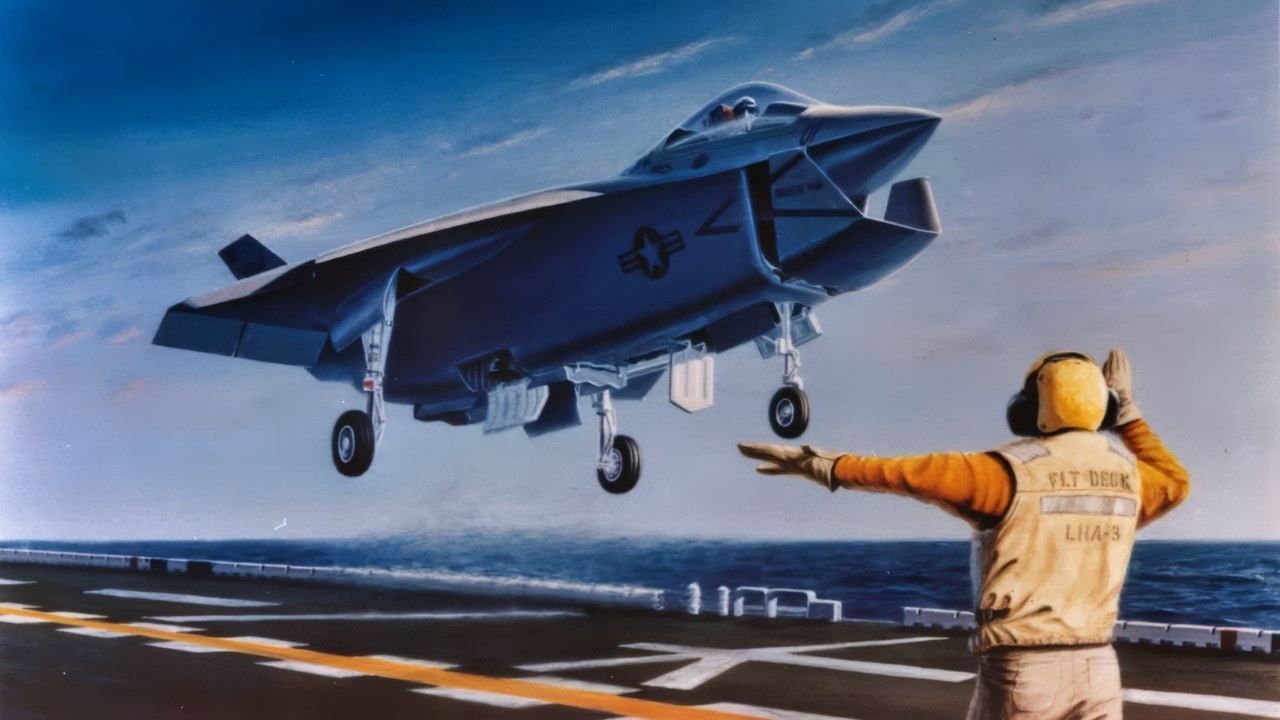
Original Caption in 1996: This artist’s conception is the U.S. Marine Corps version of the Joint Strike Fighter to be built by Boeing. Secretary of Defense William J. Perry announced the selection of the Boeing Company, Seattle, Wash., as one of two contractors to be awarded a cost-plus-fixed-fee contract for the Joint Strike Fighter Concept Demonstration Program during a briefing at the Pentagon on Nov. 16, 1996. The Joint Strike Fighter is the military’s next generation, multi-role, strike aircraft designed to complement the Navy F/A-18 and the Air Force F-22 aircraft. The Concept Demonstration Program will feature flying aircraft demonstrators, ground and flight technology demonstrations, and continued refinement of the contractor’s weapons system concept for the next generation strike fighter for the Navy, Marine Corps, Air Force, and Royal Navy. With the first operational aircraft delivery slated for 2008, the development program is a joint U.S.-United Kingdom effort that seeks to affordably replace aging strike assets while maintaining the national and allied combat technological edge. The Lockheed Martin of Fort Worth, Texas, will also develop their concept of the Joint Strike Fighter under a similar contract.
But it wasn’t for lack of trying that Boeing didn’t get a fighter plane program up and running during this 93-year interim. At the turn of the millennium, the company built a prototype stealth fighter, the X-32.
Unfortunately for Boeing, the X-32 was overshadowed by what is now known as the Lockheed Martin F-35 Lightning II. We now take a look at why the X-32 ended up losing to the Lightning.
X-32 Program Origins and Initial History
The X-32 traces its development back to 1993, when the Defense Advanced Research Projects Agency (DARPA) launched the Common Affordable Lightweight Fighter (CALF) project, with the purpose of developing a stealth-enabled, lighter-weight fighter and attack aircraft design that also had vertical/short takeoff-and-landing (V/STOL) capabilities.
In other words, a jack-of-all-trades that would complement and eventually replace the USAF’s F-16 Fighting Falcon, the US Navy’s F/A-18 Hornet, and the US Marine Corps’ AV-8B Harrier II, and with the added bonus of stealth technology to boot.
In 1994, the CALF was merged with the Joint Advanced Strike Technology (JAST) program, and in 1995, the merged venture was renamed the Joint Strike Fighter (JSF) program.
To compete for the JSF program, Boeing submitted the X-32, which featured two airframes: the X-32A and the X-32B.
The experimental aircraft made its maiden flight on September 18, 2000, making a total of 66 flights over the course of four months, demonstrating the aircraft’s handling qualities for inflight refueling, weapons bay operations, and supersonic flight.
X-32 Technical Specifications and Vital Stats
Crew: One (pilot)
Powerplant: 1 x Pratt & Whitney JSF119-614 afterburning turbofan generating approx. 50,000 lbs. thrust
Max Airspeed: Mach 1.2 (920 mph, 1,481 km/h, 800 knots)
Losing out to Lockheed Martin
As we mentioned earlier in this article, the X-32 ultimately lost out to the F-35, which was then known as the X-35. This award would give Lockheed Martin’s famed Skunk Works division a double-shot of bragging rights, as they already had the world’s first 5th-generation stealth fighter in the form of the F-22 Raptor.
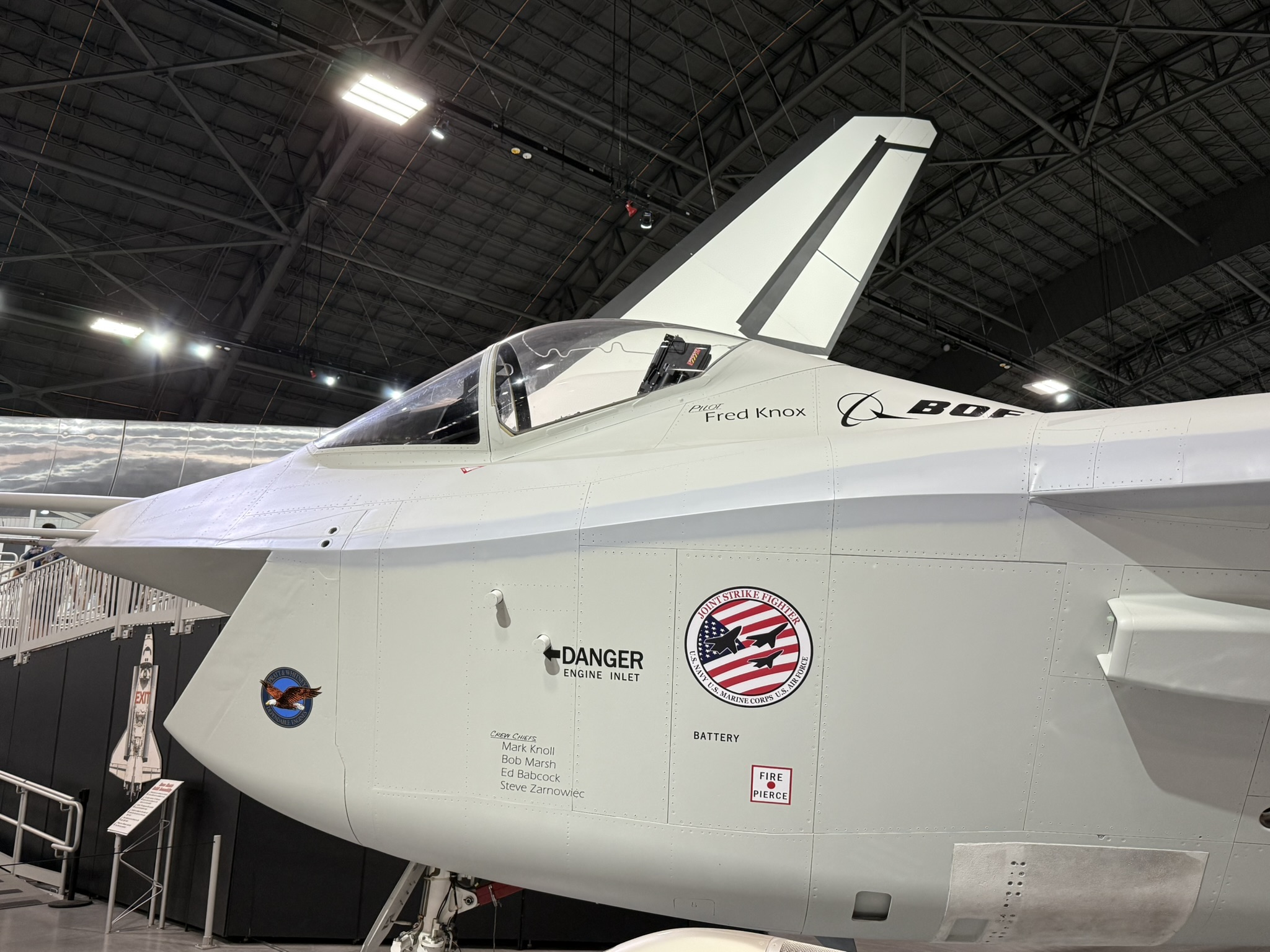
Boeing X-32 National Security Journal Photo. Taken on 7/19/2025.
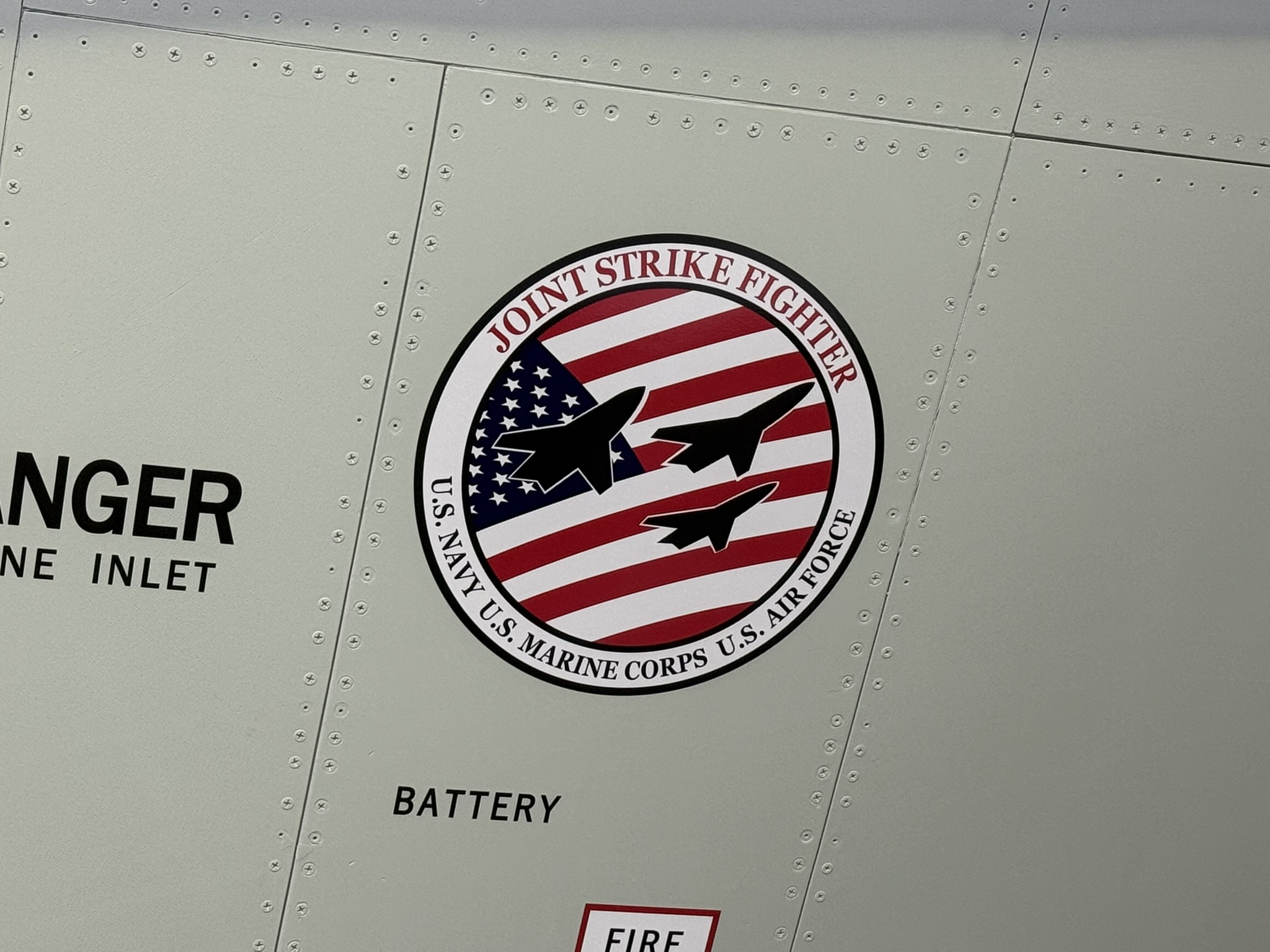
Boeing X-32 National Security Journal Photo. Taken on 7/19/2025.
So then, why did the X-32 lose to the X-35?
The short and oversimplified answer is that the Skunk Works project successfully consolidated the contract’s requirements into a single airframe. Digging deeper than that, the X-32 had a weaker V/STOL design, which caused hot air from the plane’s exhaust to be recirculated into its modified intake, weakening the thrust it could produce and leading to overheating issues.
Moreover, according to the X-32’s chief test pilot, now-Commander (USN, Ret.) Phillip “Rowdy” Yates, “One of the issues that came up was that Boeing’s design was not going to be able to conduct the short-takeoff/vertical landing exercise, if you will, the test, at Edwards. They would need to get their STOVL aircraft to Pax River, where the air was a little thicker at sea level to create more thrust and have enough safety margin to ensure that aircraft could hover.”
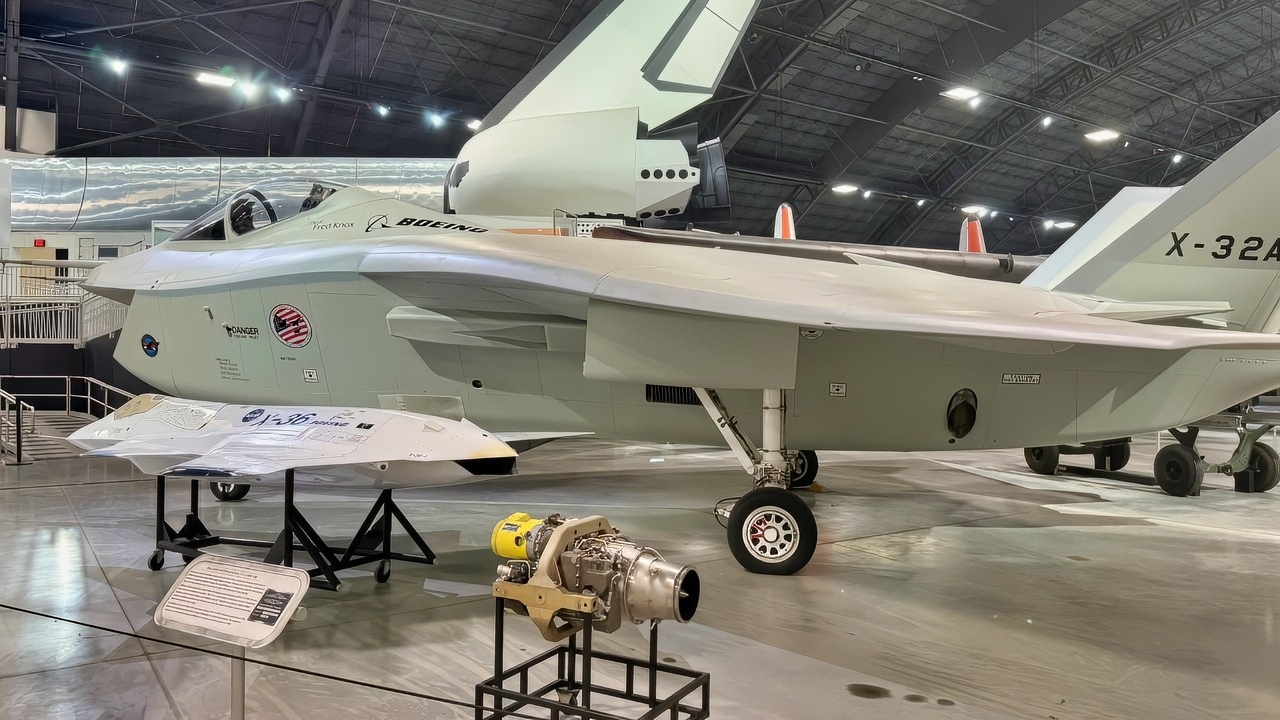
Boeing X-32 Full View. Image Credit: National Security Journal.
Meanwhile, Lockheed Martin impressed the evaluators through a demonstration in which the X-35 variant executed a vertical takeoff, accelerated to supersonic speeds, and then performed a vertical landing. As “Rowdy” states, “That was one place where we said ‘hmm, Lockheed has an advantage from a performance standpoint.’”
Thus, the X-35 was the winner and was officially redesignated the F-35 as it transitioned from prototype to production phase. The rest is history.
In 4 Words: Head to the Museum
Fortunately (for the sake of aviation history buffs), both airworthy X-32s have been preserved for posterity:
—The X-32A is displayed at the Research & Development (R&D) gallery of the National Museum of the United States Air Force at Wright-Patterson AFB in the vicinity of Dayton, Ohio. This is a highly apropos venue, as it also houses both one of Boeing’s other stealth technology demonstrators—that being the YF-118G Bird of Prey—as well as one other stealth fighter prototype that never made it to the production phase, namely the Northrop YF-23, which lost out to the YF-22 (which in turn became the F-22 as mentioned earlier) in the Advanced Tactical Fighter (ATF) competition.

YF-23 National Security Journal Close Up Photo

Northrop YF-23 National Security Journal Photo. Taken on July 19, 2025.
—The X-32B sits at the Patuxent River Naval Air Museum adjacent to NAS Patuxent River in St. Mary’s County, Maryland. Alas, this specimen is reportedly suffering from severe deterioration due to exposure to the elements of Mother Nature, as it’s an outdoor display.
About the Author: Christian D. Orr, Defense Expert
Christian D. Orr is a Senior Defense Editor. He is a former Air Force Security Forces officer, Federal law enforcement officer, and private military contractor (with assignments worked in Iraq, the United Arab Emirates, Kosovo, Japan, Germany, and the Pentagon). Chris holds a B.A. in International Relations from the University of Southern California (USC) and an M.A. in Intelligence Studies (concentration in Terrorism Studies) from American Military University (AMU).
More Military
We Almost Touched the F-117 Stealth Fighter


